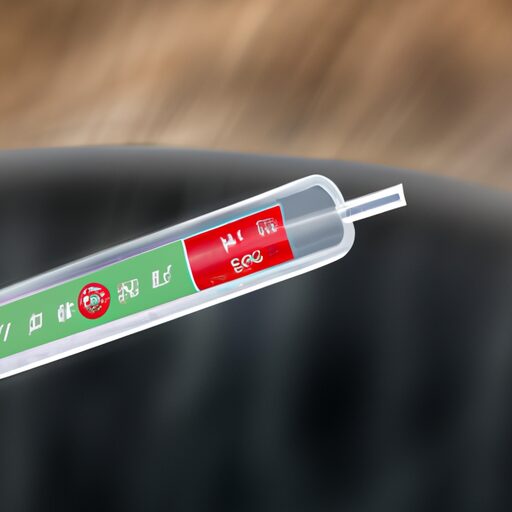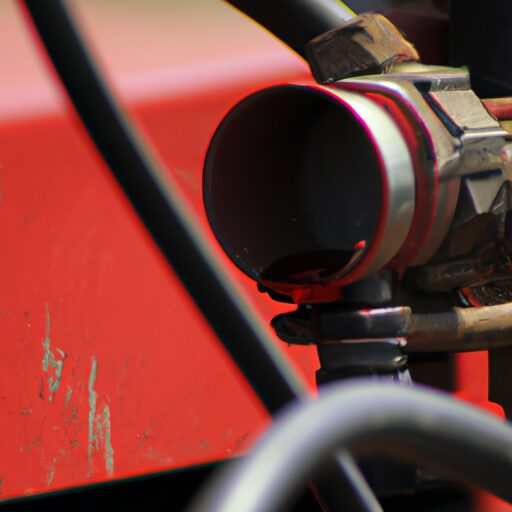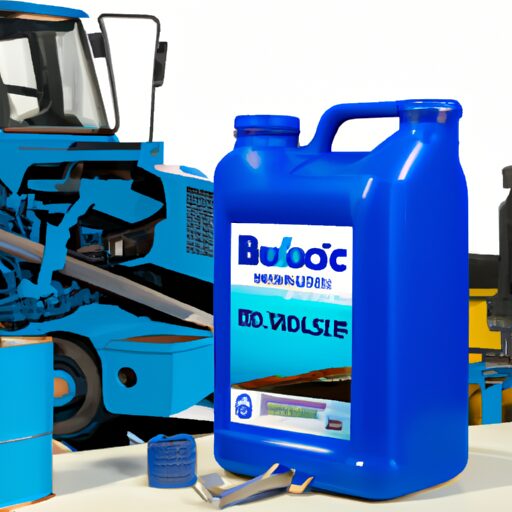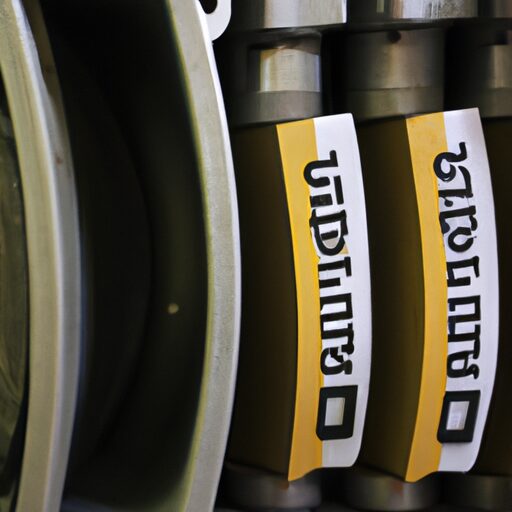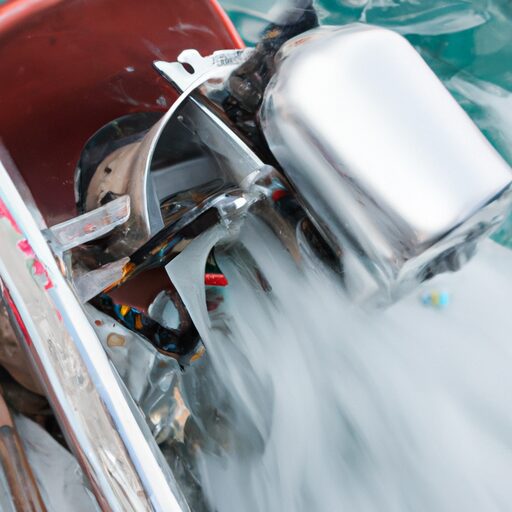How Much Hydraulic Fluid In Log Splitter
In the realm of log splitting, the adage "measure twice, cut once" holds true. Similarly, when it comes to maintaining a log splitter, one must ensure an accurate measurement of hydraulic fluid for optimal performance and efficiency. This article delves into the importance of understanding how much hydraulic fluid is required in log splitters and provides practical guidelines for adding and replenishing it. Factors that determine the appropriate amount of hydraulic fluid will be discussed, alongside common mistakes to avoid during the process. Additionally, troubleshooting techniques for addressing potential issues related to hydraulic fluid will be explored. By adhering to these recommendations and regularly checking and replenishing fluid levels, log splitter operators can prolong the machine’s lifespan while achieving optimal functionality. This article aims to cater to an audience seeking a comprehensive understanding of managing hydraulic fluids in log splitters.
Understanding the Importance of Hydraulic Fluid in Log Splitters
Understanding the significance of hydraulic fluid in log splitters is crucial for optimal performance and longevity of the machinery. Hydraulic fluid maintenance plays a vital role in ensuring smooth operation and preventing potential damage to the log splitter. The correct type of hydraulic fluid must be used to ensure compatibility with the system and prevent any adverse effects on its components.
There are different types of hydraulic fluids available, each designed for specific applications. Commonly used types include mineral oil-based fluids, synthetic fluids, and water-based fluids. Choosing the right type depends on factors such as operating temperature, pressure requirements, and environmental concerns.
Hydraulic fluid maintenance involves regular inspection for contamination or degradation. Any foreign particles or moisture should be removed promptly to avoid clogging or corrosion within the system. Additionally, routine checks should include monitoring fluid levels and topping up if necessary.
Factors that determine the required amount of hydraulic fluid include the size and design of the log splitter, as well as its intended use. It is important to follow manufacturer recommendations regarding proper fill levels to ensure efficient performance without causing excessive strain on the system.
In conclusion, understanding hydraulic fluid maintenance and selecting appropriate types are essential for log splitter performance. Now let’s explore further into factors that determine the required amount of hydraulic fluid…
Factors that Determine the Required Amount of Hydraulic Fluid
One crucial factor in determining the necessary quantity of hydraulic fluid for a log splitter is the size of the hydraulic cylinder. The size of the cylinder directly affects the amount of fluid needed to generate enough pressure to split logs effectively. Other factors that affect performance include temperature, load, and system design.
To better understand how these factors influence the required amount of hydraulic fluid, consider the following table:
| Factor | Description | Effect on Fluid Quantity |
|---|---|---|
| Cylinder Size | Larger cylinders require more fluid for optimal performance | Increase |
| Temperature | Higher temperatures cause fluid expansion, requiring more volume | Increase |
| Load | Heavier loads demand additional pressure, increasing fluid needs | Increase |
| System Design | Different designs may have varying requirements | Varies |
Maintaining an appropriate level of hydraulic fluid provides several benefits. Firstly, it ensures efficient operation by allowing proper lubrication and cooling within the system. Secondly, it helps prevent damage to components due to excessive heat or friction. Lastly, maintaining proper fluid levels extends the lifespan of seals and other hydraulic components.
Understanding these factors and their impact on log splitter performance is vital for ensuring optimal functioning. In order to add hydraulic fluid correctly, general guidelines should be followed…
General Guidelines for Adding Hydraulic Fluid
To ensure the proper functioning and longevity of the hydraulic system, it is essential to adhere to established guidelines when adding hydraulic fluid. The filling procedure for a log splitter typically involves locating the hydraulic reservoir, which is usually located on top of or near the engine. It is important to use only recommended hydraulic fluids that are suitable for log splitters. These fluids should have the appropriate viscosity and meet the specifications outlined by the manufacturer.
When adding hydraulic fluid, it is crucial to clean any dirt or debris from around the fill cap area to prevent contaminants from entering the system. The fill cap should then be removed, and a funnel can be used to pour in small quantities of fluid at a time. It is important not to overfill the reservoir as this can cause damage to seals and other components.
In conclusion, following proper guidelines when adding hydraulic fluid ensures optimal performance and efficiency of your log splitter. By using recommended fluids and adhering to correct filling procedures, you can maintain your equipment’s functionality and extend its lifespan without compromising its operation.
Transition: Moving forward, let’s explore some tips for ensuring optimal performance and efficiency in your log splitter without compromising safety precautions.
Tips for Ensuring Optimal Performance and Efficiency
Implementing proper maintenance techniques and regular inspections can significantly enhance the performance and efficiency of your log splitter, safeguarding its functionality and extending its lifespan. To ensure optimal performance and efficiency, it is crucial to follow certain maintenance practices and choose the right hydraulic fluid. Here are three important tips:
-
Regularly check the hydraulic fluid level: Maintaining the correct fluid level is essential for smooth operation. Insufficient fluid can lead to air being drawn into the system, causing reduced performance or even damage. On the other hand, overfilling can cause excessive pressure, leading to leaks or component failures.
-
Use high-quality hydraulic fluid: Choosing the right hydraulic fluid is crucial for optimal performance and longevity of your log splitter. It should meet the manufacturer’s specifications, providing adequate lubrication and protection against wear and corrosion. Using subpar fluids can result in poor performance, increased friction, and premature failure of components.
-
Change hydraulic fluid regularly: Over time, hydraulic fluids degrade due to contamination from debris or moisture absorption. Regularly changing the hydraulic fluid according to the manufacturer’s recommendations helps maintain optimum performance levels.
By following these maintenance practices and selecting the appropriate hydraulic fluid for your log splitter, you can ensure its efficient operation while minimizing potential issues. Moving on to common mistakes to avoid when adding hydraulic fluid…
Common Mistakes to Avoid When Adding Hydraulic Fluid
A common mistake to avoid when adding hydraulic fluid to your equipment is negligently disregarding the manufacturer’s recommendations and specifications, which can ultimately lead to detrimental consequences. Many people have common misconceptions regarding the amount of hydraulic fluid that should be added to their log splitter, often assuming that more is better. However, exceeding the recommended fluid level can cause excessive pressure within the system and result in leaks or component failure.
Another common mistake is using an incompatible type of hydraulic fluid. It is crucial to use the specific type of hydraulic fluid recommended by the manufacturer for optimal performance and longevity of the equipment. Using the wrong type can lead to reduced efficiency, increased wear and tear on components, and potential damage to seals or other internal parts.
To avoid these mistakes, it is important to carefully read and follow the manufacturer’s instructions for adding hydraulic fluid. Additionally, regularly checking fluid levels and addressing any leaks promptly can prevent further issues from arising.
In conclusion, understanding and adhering to the manufacturer’s recommendations for adding hydraulic fluid is essential for maintaining optimal performance and avoiding costly repairs. Troubleshooting common hydraulic fluid issues will be discussed in the subsequent section without writing ‘step’.
Troubleshooting Common Hydraulic Fluid Issues
To ensure optimal performance and longevity of a hydraulic system, it is crucial to troubleshoot common hydraulic fluid issues promptly. One of the most prevalent problems that can arise is hydraulic fluid contamination. Contamination can occur due to various factors such as dirt, water, or foreign particles entering the system. Identifying signs of hydraulic fluid contamination is essential for preventing further damage and maintaining system efficiency.
Common indicators of contaminated hydraulic fluid include increased operating temperatures, reduced component lifespan, decreased overall system performance, and unusual noises or vibrations during operation. If any of these symptoms are observed, it is important to address the issue promptly by identifying the source of contamination and taking appropriate action.
Troubleshooting common hydraulic system problems involves thorough inspection and analysis. This may include checking for leaks or damaged seals that could introduce contaminants into the system. Additionally, regular sampling and testing of the hydraulic fluid can help identify potential issues before they escalate.
By proactively troubleshooting hydraulic fluid problems and addressing them in a timely manner, operators can minimize downtime and avoid costly repairs. In the subsequent section about the importance of regularly checking and replenishing hydraulic fluid levels, we will further explore strategies for maintaining optimum fluid levels to ensure smooth operation of log splitters without interruption.
Importance of Regularly Checking and Replenishing Hydraulic Fluid Levels
Regularly monitoring and replenishing the levels of the vital lifeline that sustains the smooth functioning of a log splitter’s power system is crucial for its continuous operation. Hydraulic fluid serves as the primary medium through which power is transmitted in a log splitter, enabling the machine to generate sufficient force to split logs effectively. One important aspect of maintaining hydraulic fluid levels is ensuring that it remains clean and free from contaminants. Using synthetic hydraulic fluid offers numerous benefits, such as improved lubrication properties, increased resistance to temperature extremes, and reduced wear on components. Synthetic fluids also have a longer service life compared to conventional fluids, reducing maintenance requirements and costs.
On the other hand, using old or contaminated hydraulic fluid can pose significant risks to the log splitter’s performance. Over time, hydraulic fluid can accumulate impurities such as dirt, water, and debris. These contaminants can cause damage to internal components and decrease overall efficiency. Additionally, old or degraded fluid may lose its viscosity and fail to provide adequate lubrication or seal protection.
Regularly checking and replenishing hydraulic fluid levels not only ensures optimal performance but also extends the lifespan of a log splitter’s power system. By using high-quality synthetic fluids and avoiding old or contaminated ones, users can minimize potential risks associated with subpar hydraulic fluid quality and maintain their log splitters in peak operating condition for extended periods of time.
Frequently Asked Questions
Can I use any type of hydraulic fluid in my log splitter?
The compatibility of hydraulic fluid is crucial for the proper functioning of a log splitter. It is important to use the appropriate type of hydraulic fluid to ensure optimal performance and prevent damage to the equipment.
How often should I check and replenish the hydraulic fluid in my log splitter?
The frequency of checking and replenishing hydraulic fluid in a log splitter depends on the usage and operating conditions. Regular maintenance is recommended to ensure optimal performance and prevent damage to the hydraulic system. The benefits of using hydraulic fluid include enhanced lubrication, heat dissipation, and corrosion prevention.
Can I mix different brands or types of hydraulic fluid in my log splitter?
The compatibility of different brands or types of hydraulic fluid in a log splitter depends on the specific specifications provided by the manufacturer. Using specific hydraulic fluid brands recommended by the manufacturer ensures optimal performance and longevity of the equipment.
What are the signs that indicate I need to add more hydraulic fluid to my log splitter?
Low hydraulic fluid in a log splitter can be indicated by sluggish operation, increased noise, or leaks. To properly add hydraulic fluid, locate the fill port, remove the cap, and slowly pour in the recommended type of fluid until it reaches the appropriate level.
Are there any alternative options to hydraulic fluid that can be used in a log splitter?
Alternative options for hydraulic fluid in log splitters are limited. Some users have experimented with using vegetable oils or ATF (automatic transmission fluid), but these alternatives may not provide the same level of performance and could potentially damage the equipment. Proper log splitter maintenance includes regular checks and proper filling of hydraulic fluid.
Conclusion
In conclusion, the importance of hydraulic fluid in log splitters cannot be overstated. It is crucial for ensuring optimal performance and efficiency of the machine. The required amount of hydraulic fluid depends on various factors such as the size and design of the log splitter. General guidelines can help determine how much hydraulic fluid to add, but it is essential to avoid common mistakes during this process. Regularly checking and replenishing the hydraulic fluid levels is vital to prevent any potential issues. Overall, maintaining proper hydraulic fluid levels is essential for smooth operation and longevity of log splitters.

